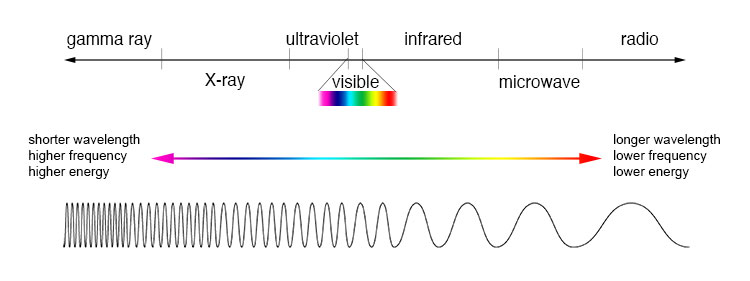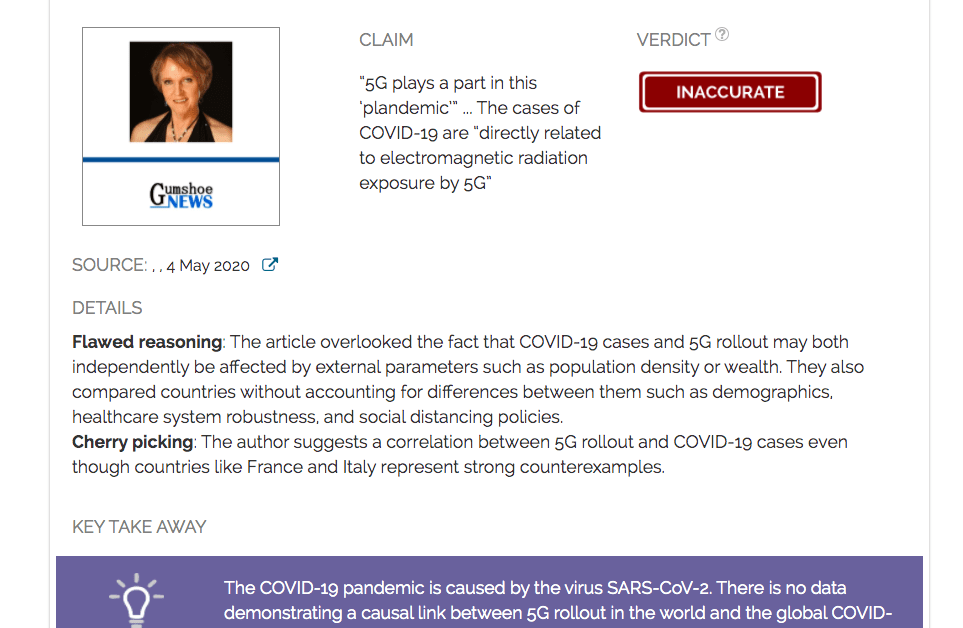- Health
Are AirPods and other wireless communication devices harmful, as claimed on social media? A look at the evidence
Key takeaway
Concerns about the health risks of wireless communication devices have circulated since the onset of their use. Studies on cell phones specifically have provided inconclusive evidence regarding potential health risks. Wireless communication devices must also meet minimum safety guidelines established by the U.S. Federal Communications Commission (FCC) in order to be sold in the U.S. FCC filings for AirPods have consistently shown that they meet these safety requirements.
Reviewed content

Verdict:
Claim:
AirPods emit dangerous levels of radiation that harm the body
Verdict detail
Inadequate support: AirPods meet existing safe exposure limits as outlined by the U.S. Federal Communications Commission. Existing scientific studies have found conflicting evidence regarding the relationship between wireless communication device use and health risks.
Cherry-picking: The post only referenced three of the supposed 1,500 studies that show radiation exposure is harmful for the body. But even among these three studies, findings are inconsistent. The post only highlighted a portion of all available evidence regarding potential harms of radiation from wireless communication devices.
Full Claim
“Airpods […] work by emitting and receiving radio frequency microwaves radiation, which can heat and damage your body’s tissues […] There is a solid amount of research, over 1,500 studies […] that suggests that this microwave radiation is harmful for your body […] There's also studies with human sperm showing that when they are exposed to these EMFs, they have more DNA breaks and their motility is impaired”
Review
An Instagram post shared on 25 February 2024 by physician Paul Saladino claimed that Apple AirPods emit dangerous levels of radiation, which can have a harmful impact on the body. It specifically highlighted dangers to reproductive health by claiming there are studies that show exposure to electromagnetic fields (EMF) impairs sperm motility.
Saladino is a psychiatrist and social media personality who has advocated for consuming a “carnivore diet” to improve and maintain health. However, there’s no reliable evidence that a meat-based diet can treat health problems, and plenty of evidence that it can lead to health problems like heart disease when consumed over the long term. He has also made a number of pseudoscientific claims about health; for instance, advocating against children using toothpaste, claiming it won’t prevent tooth decay (this is incorrect).
Saladino’s claim about AirPods emitting dangerous radiation isn’t new; it previously went viral on Facebook and TikTok according to fact-checks published by Reuters in 2021 and USA Today in 2022. As we will explain below, the scientific evidence on the health risks of AirPods at the moment is far from clear-cut and doesn’t sufficiently demonstrate harm, contrary to Saladino’s claim.
How do AirPods work?
AirPods rely on Bluetooth technology to enable wireless audio streaming. Bluetooth enables devices to connect to one another—for example, a cell phone and a pair of AirPods—by operating on radio frequencies (RF), a type of man-made EMF. Devices must typically be within close proximity of one another in order for Bluetooth technology to work.
For context, there are both natural and human-made sources of EMF. Natural sources of EMF include lightning and ultraviolet radiation from the sun. Other human-made sources beyond Bluetooth technology include X-rays and microwave ovens.
The claim that AirPods work using “radio frequency microwaves radiation” suggests a concept that doesn’t actually exist. Though radiofrequency and microwave radiation share some characteristics, they aren’t identical. More specifically, microwave radiation occurs at a slightly higher frequency and shorter wavelength on the electromagnetic spectrum than radio waves, as shown in Figure 1 below.

AirPods fall within the U.S. Federal Communication Commission’s safe exposure limits
The U.S. Federal Communication Commission (FCC) sets guidelines for wireless communications devices like AirPods to ensure that these devices meet minimum requirements for safe exposure to RF.
This exposure limit is specified by the Specific Absorption Rate (SAR), which is measured by the rate at which RF energy is absorbed by the body.
The allowable SAR for AirPods set by the FCC is 1.6 watts per kilogram (W/kg). Apple’s most recent SAR test report, filed with the FCC on 12 September 2023, found that the head SAR for wireless bluetooth earbuds was 0.39 W/kg and the body-worn SAR was 1.18 W/kg.
Apple’s FCC filings for wireless earbud devices from previous years also indicated that the head and body-worn SARs were below the FCC’s SAR limit for exposure to RF.
As with any scientific evaluation, it’s important to be aware of limitations of findings. The 2023 SAR evaluation report did just this, noting the limitations of measuring electromagnetic energy in the body. The document’s conclusion (page 24) states that:
“The absorption and distribution of electromagnetic energy in the body are very complex phenomena that depend on the mass, shape, and size of the body, the orientation of the body with respect to the field vectors, and the electrical properties of both the body and the environment. Other variables that may play a substantial role in possible biological effects are those that characterize the environment (e.g. ambient temperature, air velocity, relative humidity, and body insulation) and those that characterize the individual (e.g. age, gender, activity level, debilitation, or disease).”
Insufficient evidence showing a causal relationship between wireless communication devices and harm
The Instagram post claimed that there are over “1,500 studies” showing that microwave radiation is harmful to the body. It’s unclear where this 1,500 studies figure comes from or what these harmful effects may be. Science Feedback reached out to Saladino to ask for the source for this number and will update this review if new information becomes available.
The post may be referring to concerns about links between wireless communication devices and cancer. Science Feedback covered similar claims here and here.
In 2020, the U.S. Food and Drug Administration (FDA) released a risk analysis report assessing the potential carcinogenic properties of wireless communication devices. The report reviewed animal and human studies published over a ten-year period between 2008 and 2018, and came to the following conclusion:
“Based on the studies that are described in detail in this report, there is insufficient evidence to support a causal association between RFR [radiofrequency radiation] exposure and tumorigenesis [formation of a cancer]. There is a lack of clear dose response relationship, a lack of consistent findings or specificity, and a lack of biological mechanistic plausibility.”
Sperm motility study contains flaws; more research is needed on RF’s impact on reproductive health
The post claimed there are “studies with human sperm showing that when they are exposed to these EMF, they have more DNA breaks and their motility is impaired”. It cited three studies to substantiate its claims.
Skyler B. Johnson, an assistant professor in the department of radiation oncology at the University of Utah Huntsman Cancer Institute, shared the following with Science Feedback in regard to these studies:
“There is no evidence that Apple AirPods emit dangerous levels of radiation that impact the human body. The papers cited are low quality evidence and there is no compelling information within them that link AirPods to health conditions.”
To elaborate further, in one study, sperm samples from 32 men were divided into two groups to determine potential differences in sperm motility relative to cell phone exposure[1]. The study defined this exposure as proximity of the sperm samples to cell phones in a temperature-controlled environment and measured differences after a five-hour period. It concluded there was a correlation between cell phone exposure and reduced sperm motility.
However, the study can’t reliably confirm this correlation. Sperm samples were collected and studied in vitro—in other words, they were observed outside of their normal biological state.
For context, in vitro studies are sometimes referred to colloquially as “test tube experiments” because they often don’t reflect real-life conditions of the human body, nor the variables humans might encounter on a day-to-day basis. In contrast, in vivo studies are those conducted in living beings, such as in a clinical trial.
The conditions of the in vitro study referenced in the claim differ from human exposure because sperm samples were in direct contact with phone radiation. Under normal circumstances, radiation would first have to penetrate skin and organ tissues.
The other two studies reviewed existing literature to evaluate any links between oxidative stress on reproductive function and wireless communication devices[2,3].
One of the reviews presented evidence for the potential harm of wireless communication devices on health. It found that some animal and cell studies showed “possible impairment of reproduction at different stages” including “sperm maturation, very early stages of pregnancy such as implantation, and effects in newborns”[3].
However, animal studies in the other review found that there were no negative effects on reproductive function[2]. For example, one study on male and female mice exposed to cell phone EMF for 24 hours a day over the course of their lifetimes found no harmful effects on their development or fertility[4]. Other studies exposing rats to Wi-Fi signals during sexual maturation and gestation found no harmful effects to the rats’ reproductive organs, nor abnormalities in the pre- and post-natal periods for the rats’ offspring[5,6].
Both reviews indicated that further research is needed in human studies to better understand the effects of RF on reproductive health.
In summary, none of the three studies that Saladino cited provide reliable evidence for his claim that AirPods emit harmful radiation.
REFERENCES
- 1 – Gorpinchenko et al. (2014) The influence of direct mobile phone radiation on sperm quality. Central European Journal of Urology.
- 2 – Santini et al. (2018) Role of Mitochondria in the Oxidative Stress Induced by Electromagnetic Fields: Focus on Reproductive Systems. Oxidative Medicine and Cellular Longevity.
- 3 – Schuermann and Mevissen. (2021) Manmade Electromagnetic Fields and Oxidative Stress—Biological Effects and Consequences for Health. International Journal of Molecular Sciences.
- 4 – Sommer et al. (2009) Effects of radiofrequency electromagnetic fields (UMTS) on reproduction and development of mice: a multi-generation study. Radiation Research.
- 5 – Poulletier de Gannes et al. (2013) Rat fertility and embryo fetal development: Influence of exposure to the Wi-Fi signal. Reproductive Toxicology.
- 6 – Poulletier de Gannes et al. (2012) Effect of In Utero Wi-Fi Exposure on the Pre- and Postnatal Development of Rats. Developmental and Reproductive Toxicology.



